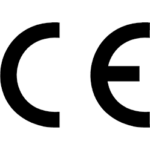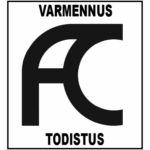Certification is a proof of compliance, which is linked to a system, product, service or person. The aim of certification is to prove to all interest groups that the product or service meets given requirements, by giving this assurance through a third party.
Certification revolves around
- the quality of the product itself, or
- the quality control.
It is vital that the certification process is reliable, independent and competent.
Certifications are done and conceded by objective certification body. Certification is licensed activity. Liability can’t be reduced or eliminated by product certification.
Certification process
When a producer wishes to obtain a certificate for a product, the first step is to contact a certification body, with whom the product certification application is lodged.
Once it has been established that there are sufficient grounds for certification, a first meeting is agreed to the production and storage site.
At this stage producers’ processes, quality control and product conformity are assessed, followed by a written report pointing out possible deviations and corrective actions.
Once the manufacturing process and the product meets all the required criteria the certification body makes a certification decision and issues a certificate.
Certificates are usually given to a unit at one location, but there are exceptions like movable sawing units used in small scale production.
CE mark
At this point, the certificate holder is allowed use certification stamps in its products, documentation and marketing.
An example of a certification mark is for instance the CE mark, which is a guarantee that the product meets the requirements set by the harmonized product standard and the criteria set by the producer. The certification holder is responsible of the use of certificate.
Examples of different quality assurance marks.
With building products the producer of CE marked goods announces that the product qualities meet the harmonized European product standards. These include product properties, quality control and testing as well as required markings.
Declaration of Performance DoP
The producer must also be able to prove the Declaration of Performance (DoP), which singles out more product properties and also clarifies the conformity to intended end use. Usually the DoP is shown on the homepages of the company.
Audits
A certificate is valid for the time being or over an agreed period. Furthermore there needs to be continuous quality control and regular, usually annual audits.
Nonconformities
Any nonconformities will result in actions in processes and if the product or service does not meet the certification criteria the certificate can also be withdrawn.




